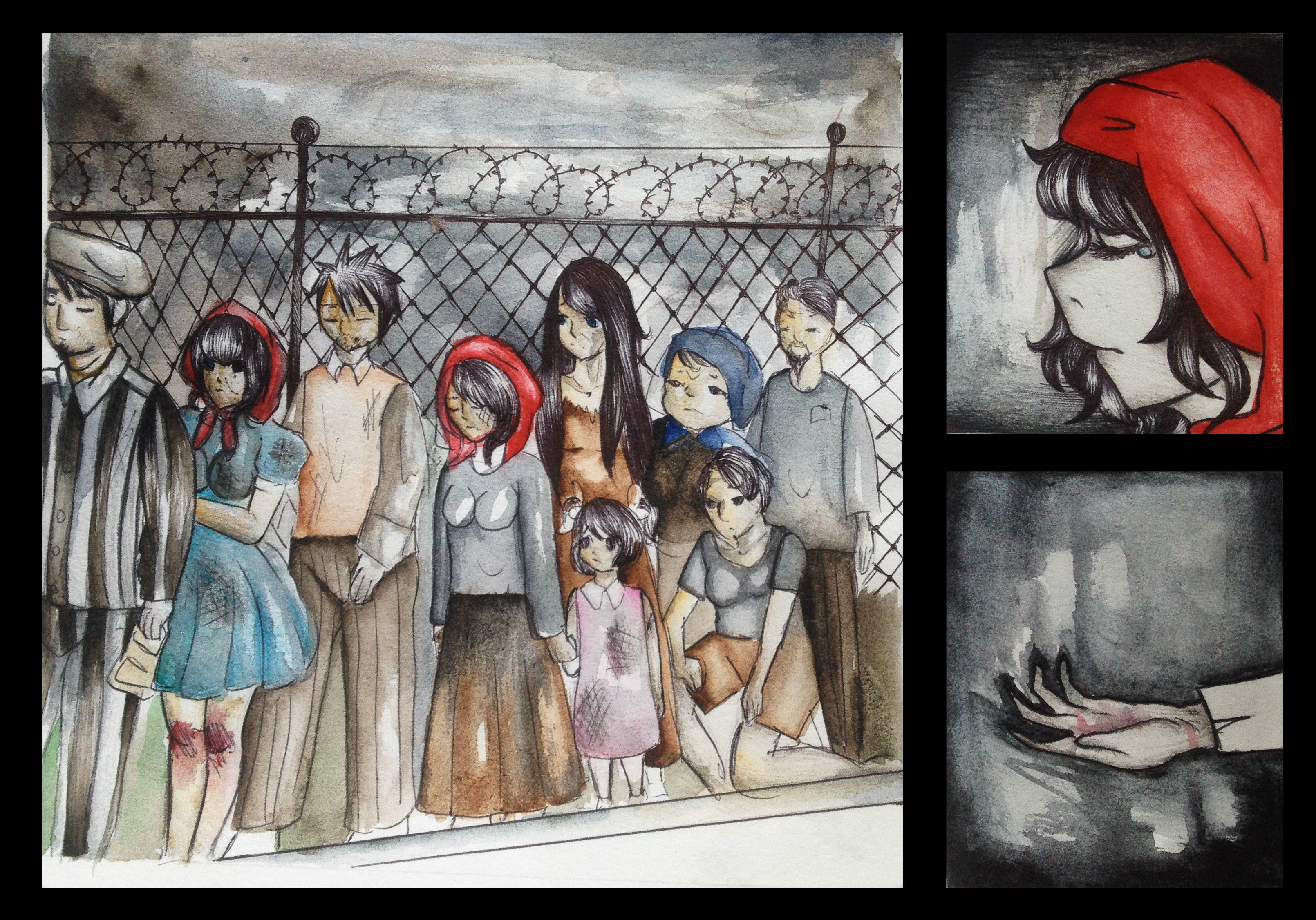Ukrainian Students Create Art for Annual Sources of Tolerance Summer Camp

Ukrainian students once again demonstrated their artistic skill and sensitivity to testimony for this year’s “Sources of Tolerance” summer camp in Ukraine.
This was the third year that students were asked to watch testimony from the Visual History Archive and submit an original artwork inspired by a testimony clip of their choice as part of their application to the camp.
Twenty-four students applied and 20 were chosen to attend the camp, which will be held July 6-17, 2016, in the Carpathian mountains. Among them there are teenagers from close-to-conflict cities Mariupol and Makiivka, displaced teenagers from Lugansk and Donetsk, children of Ukrainian officers who were in the Anti-Terrorist Operation Zone (ATO), and their peers from Kyiv, Zhytomyr, Lviv, Hmelnitsky, Dnepropetrovsk, and Chernigiv.
Founded in 2002, the summer school’s objective is to facilitate dialogue between teenage members of national minority groups, internally displaced persons (IDPs) and students from the host community, to strengthen social responsibility and empathy among teenagers, to assist in the integration of minority members, IDPs and victims of conflict. The concept has been further developed to address the demands of the ongoing conflict situation in Ukraine.
USC Shoah Foundation’s regional consultant in Ukraine, Anna Lenchovska, helps organize the summer school and is involved with the application process.
For their application to the program, students had the option of making an illustration about a testimony clip from Where Do Human Rights Begin: Lessons of History and Contemporary Approaches, the testimony-based Ukrainian-language teacher’s guide published on the USC Shoah Foundation website. The guide consists of 10 modules highlighting the rights guaranteed by the United Nations’ Universal Declaration of Human Rights as well as human rights violations of the 20th century and recent cases. Each module includes clips of Holocaust survivor testimony from the Visual History Archive.
“[The application] promotes the value of testimonies of violations of human rights among teenagers, and helps them to develop creative and personal attitudes to history,” Lenchovska said.
Several students were inspired by Vasylyna Sitko’s testimony. She was 15 years old when she was forcibly deported from her village in the Kyiv region to Germany and worked at labor camp. Two students illustrated Vaslylyna’s testimony in anime style, and six others illustrated a poem she recites in her testimony.
Two students chose to illustrate the testimony of Anastasiya Kazak, a Jehova’s Witness who was deported to Stutthof concentration camp and arrested upon her return to the USSR and sent to a forced labor camp.
Many students drew pictures based on their general impressions of the testimonies they watched.